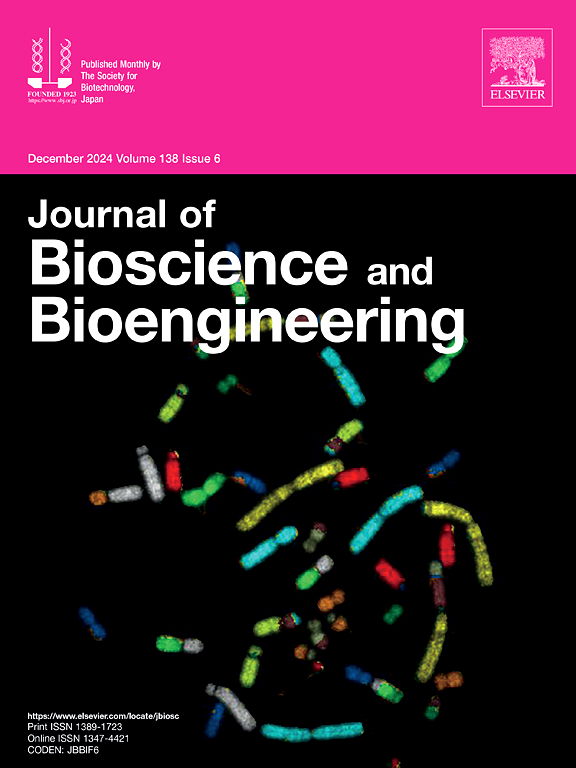利用裂糖菌体蛋白二硫异构酶Pdi1p构建异源蛋白分泌系统。
IF 2.9
4区 生物学
Q3 BIOTECHNOLOGY & APPLIED MICROBIOLOGY
引用次数: 0
摘要
裂糖酵母(Schizosaccharomyces pombe)常被用作异源蛋白生产的宿主;然而,细胞外分泌异种蛋白的方法将有利于纯化和天然蛋白结构。在先前的研究中,内源性蛋白二硫异构酶(PDI)基因的过表达促进了pombe中重组人转铁蛋白的分泌。在本研究中,我们探讨了Pdi1是否可以用于S. pombe的异源蛋白分泌。Pdi1p与外源蛋白EGFP的融合蛋白(Pdi1p-EGFP)在宿主S. pombe A8菌株中过表达,导致融合蛋白在细胞外高效分泌,该菌株缺乏8种细胞内和细胞外蛋白酶。为了确定Pdi1p作为细胞外载体的最佳区域,我们比较了融合到Pdi1p n端信号域和Pdi1p缺失突变体的EGFP分泌。单独的信号序列没有改善分泌,但在c端删除两个结构域确实改善分泌。值得注意的是,x结构域对融合蛋白的分泌很重要。基于这些发现,我们利用优化设计的Pdi1p作为细胞外分泌的载体,建立了一个高效分泌靶异种蛋白的系统。本文章由计算机程序翻译,如有差异,请以英文原文为准。
Construction of a heterologous protein secretion system using the protein disulfide isomerase Pdi1p in Schizosaccharomyces pombe
The fission yeast Schizosaccharomyces pombe has been often used as a host for heterologous protein production; however, a method for extracellular secretion of heterologous protein would be advantageous for ease of purification and for native protein structure. In a previous study, overexpression of endogenous protein disulfide isomerase (PDI) genes improved the secretion of recombinant human transferrin in S. pombe. In the present study, we have explored whether Pdi1 can be used for the secretion of heterologous proteins in S. pombe. Overexpression of a fusion protein of Pdi1p and the heterologous protein EGFP (Pdi1p-EGFP), in the host S. pombe A8 strain, which lacks eight intracellular and extracellular proteases, resulted in efficient extracellular secretion of the fusion protein. To identify the optimal region of Pdi1p for use as an extracellular carrier, we compared the secretion of EGFP fused to the N-terminal Pdi1p signal domain and deletion mutants of Pdi1p. The signal sequence alone did not improve secretion, but deletion of two domains at the C-terminus did improve secretion. Notably, the x domain was important for secretion of the fusion protein. As a result of these findings, we have established a system for efficient secretion of target heterologous proteins by using optimally designed Pdi1p as a carrier for extracellular secretion.
求助全文
通过发布文献求助,成功后即可免费获取论文全文。
去求助
来源期刊

Journal of bioscience and bioengineering
生物-生物工程与应用微生物
CiteScore
5.90
自引率
3.60%
发文量
144
审稿时长
51 days
期刊介绍:
The Journal of Bioscience and Bioengineering is a research journal publishing original full-length research papers, reviews, and Letters to the Editor. The Journal is devoted to the advancement and dissemination of knowledge concerning fermentation technology, biochemical engineering, food technology and microbiology.
 求助内容:
求助内容: 应助结果提醒方式:
应助结果提醒方式:


